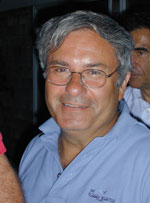Guy Salama, PhD
Mentor

Dr. Guy Salama
(Cell Biology and Physiology & Bioengineering) Cardiac function; Electrophysiology; Imaging techniques for ionic and voltage quantitation
Our research group focuses on the investigation of cardiac arrhythmia mechanisms using a variety of new tools in bioengineering, molecularly engineered mouse models, signal processing and statistical analysis of electrical signals from the heart and mathematical modeling. We have pioneered the application of voltage-sensitive dyes and fluorescence imaging techniques to measure electrical activity across the surface of the heart. The method has now been extensively used to map cardiac action potentials, activation and repolarization patterns, dispersion of repolarization, impulse propagation across the atrioventricular node, the initiation and maintenance of arrhythmias, the life span of ventricular fibrillation events, restitution kinetics, etc. More recently, we developed the first instrument to simultaneously map voltage and intracellular free calcium (Cai) transients from mammalian hearts and to characterize the mechanisms underlying the initiation of electromechanical alternans in normal guinea pig hearts. The role of Cai as a possible trigger of arrhythmias in the long QT syndrome and other arrhythmias (rapid pacing or ischemia) are currently being investigated. In collaboration with Dr. Barry London, molecularly engineered mice with selective molecular targets designed to mimic a wide range of human cardiac diseases (Long QT syndrome, heart failure, cardiomyopathies, etc.) are being used to elucidate mechanisms and potential treatment modalities. We have also developed a perfused rabbit heart preparation that retained complete functional enervation from the two stellate ganglia and the vagus nerves. The nerves can be independently stimulated while optically recording voltage and Cai transients from the heart. Finally, our group has developed new voltage sensitive dyes that can be excited (700 nm) and emit (850 nm) at long wavelengths which will be used to develop a new instrument to map electrical activity of the heart in 3-dimensions. The instrument is based on a shifting Ronchi grating to resolve cardiac action potentials deep inside the heart wall and its conduction system.
